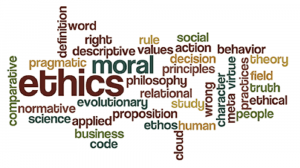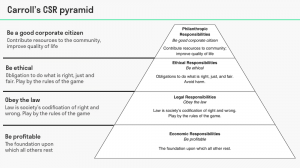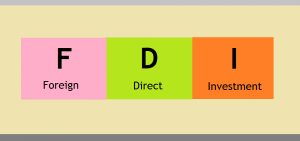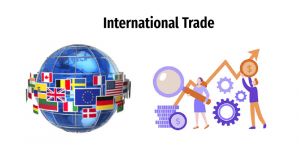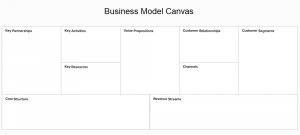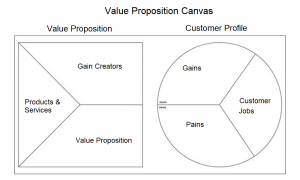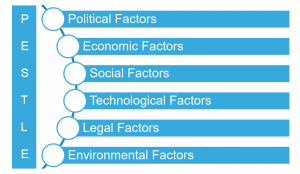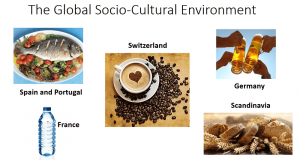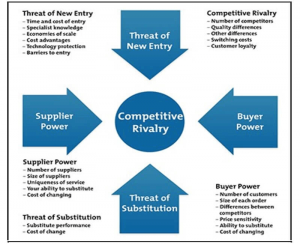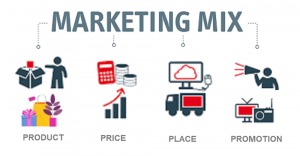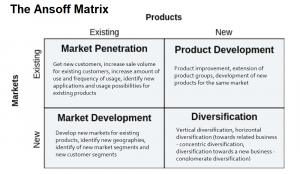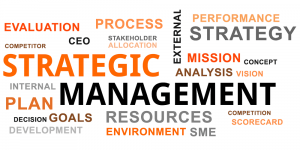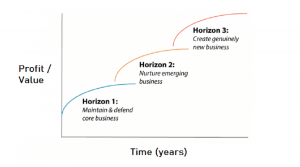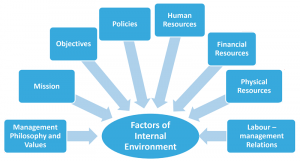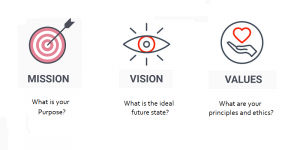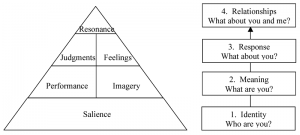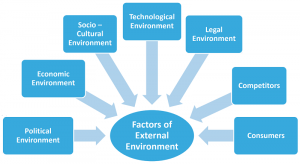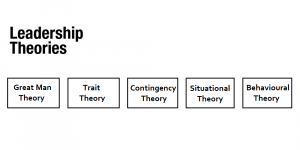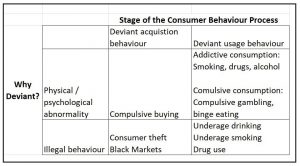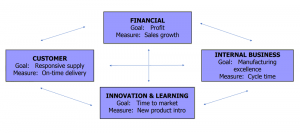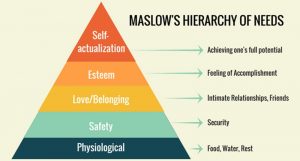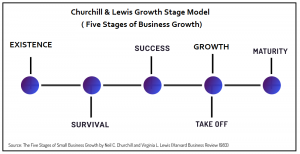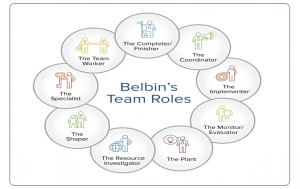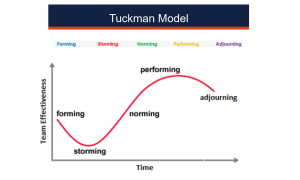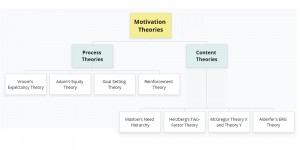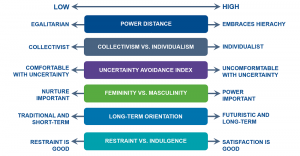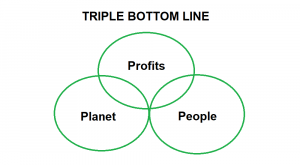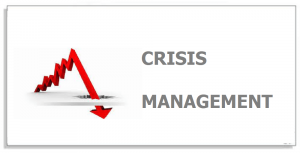Aaron Quinn raises the ethical issue of manipulating images in Photojournalism, through the use of computers, high-end camera gear and imaging editing software, as most readers feel that the images they see in newspapers and media is manipulated by journalists, as a result of which public trust is waning in journalism. Aaron Quinn says that […]
Ethical Issues with respect to Technology
Ethics is a branch of philosophy that studies morality, and Ethics in technology addresses ethical questions specific to the Technology Age. Professional ethics falls under the sub discipline of applied ethics as its purpose is to reason about, and answer moral issues, that arise in certain specific situations encountered by professionals. There are situations when […]
Kohlberg and Gilligan theory of moral development: Differences
Key issues in the ‘Kohlberg–Gilligan conflict’ and reasons why Gilligan criticized Kohlberg. Kohlberg’s research is based on the cognitive development theory in psychology adopting a functional perspective on ethical behaviour which assumes that: Individual behaviour is directed by moral beliefs. Moral beliefs enable individuals to understand and evaluate the behaviour of others. 18 year study […]
Corporate Social Responsibility (CSR): Theories
Corporate Social Responsibility (CSR): Importance in recent years and explanation of various concepts What is Corporate Social Responsibility (CSR)? Corporate social responsibility (CSR), also known as corporate responsibility (CR) or business sustainability, is a form of corporate self-regulation integrated into a stakeholder type business model. CSR focuses on achieving business sustainability through the delivery of […]
Foreign Direct Investment (FDI): Basics, Concepts, Case Studies
Foreign Direct Investment (FDI) explained. Understand concepts, key terms, and also find case studies related to FDI. These terms are commonly used while talking about FDI. MNCs/MNEs – nomenclature of foreign business FDI-inward/outward Domestic/ cross border business Subsidiaries / affiliates / parent company Home country / host country Rankings / indexes- Ease of doing business […]
US-China trade conflict
The US-China trade war has been escalating for some time now, especially after the Covid-19 pandemic. More companies are planning to diversify their supply chain after the Covid-19 pandemic crippled their business. Also, it’s getting too bureaucratic to be a foreigner in China and hence companies are looking to move to other countries in Asia […]
Business Ethics & Responsibility: Theories, Definition, Principles, Examples
Business ethics addresses issues of right and wrong in decision making, but how does one decide what is right and what is wrong. Importance of Business Ethics Business ethics addresses issues of right and wrong in decision making. Law also tells us what is right and wrong but often law is the minimum acceptable standard. […]
Business Canvas Model
The business canvas model is one of the more commonly used frameworks that are used to explain the business model of a firm, and to explain the more important elements of the business. The canvas displays all this information in a single view thereby making it easy to visualize the business (Osterwalder et al., 2011). […]
Value Proposition Canvas
The Value Proposition Canvas is a useful tool to understand how a new product/service that a business plans to introduce can help the buyers. The canvas consists of two sections, the customer profile and value proposition (Osterwalder et al., 2014). The Value Proposition Canvas is a tool/framework used by product owners, marketing experts, and businesses […]
Role of WTO (World Trade Organization) in International Trade
What is WTO (World Trade Organization) and its importance in international trade. Introduction to WTO The World Trade Organization (WTO) is a global body that deals with the rules of trade between nations. The WTO strives to ensure trade flows as freely and predictably as possible. WTO replaced the GATT. GATT = General Agreement on […]
Technological Environment: Impact on business
Technological Environment (Domestic or Foreign Technological Factors) and its impact on business. Two of the principal divers of global development have been speed of communication and the reduction in cost of technology. New technologies in both home and host market impact strategic thinking and should be taken into account when developing a global marketing strategy. […]
The Economic Environment facing Business
Economic environment refers to the external economic factors that can influence businesses as well as consumer behavior, and in turn impact the performance of a business. Economic environment factors are further categorized as macroeconomic factors and microeconomic factors. It is important for managers to appreciate the importance of the economic analysis of foreign markets, to […]
The Legal Environment facing business
The legal environment of a country is framed by its government and comprises of business laws that every business operating in that country must adhere to. Legal Environment (Domestic or Foreign Legal Factors) stems from the political stance and cultural attitude towards business in the domestic and foreign market in which the company operates. International […]
The Political Environment facing business
Political Environment (Domestic or Foreign Political Factors) includes any domestic and foreign political factors which may affect the organization’s decision making, planning, implementation and control mechanisms. Marketers have to work within the framework of each country’s ruling parties in which they operate. Each nation has a unique political culture that: reflects the relative importance of […]
Most favoured nation (MFN) principle of WTO agreements
In international trade, most-favored-nation (MFN) treatment means a policy of non-discrimination towards all the WTO members. Although the name implies favoritism and exclusive trading privileges toward one particular nation, it actually means equal treatment of all member countries. So, for example, if a country reduces tariffs by 5% for one nation, the MFN clause says […]
Culture and Impact of Socio-Cultural Environment on Business
Culture is an intangible and wide-ranging concept whose theoretical basis is based in several traditional fields of research including anthropology, management, psychology and other social sciences is culture. Culture has many views; however, a very common understanding of culture is that it is related to concepts such as behaviour, values, and norms of a certain […]
How to do Competitor Analysis
As part of the industry or sector analysis, it is important to examine the activity of competitors. Competitive analysis is about assessing the nature and extent of competition in the organisation’s market place. As part of competitive analysis, detailed information is needed on the following: Competitors: who are they, where are they, what are they […]
Introduction to Marketing: Useful Concepts
Introduction to marketing: Various definitions, marketing mix, sales vs. marketing, marketing plans, and more. What is Marketing? Marketing is an organizational function and a set of processes for creating, communicating and delivering value to customers and for managing customer relationships in ways that benefit the organisation and its stakeholders. Marketing management is the art and […]
Ansoff Matrix Explained
Ansoff Matrix, often referred to as the Product/Market Expansion Grid, is a strategic planning framework used by firms to help plan their growth initiatives. The matrix talks about four different growth alternatives – market penetration, market development, product development and diversification. The Ansoff matrix is named after Igor Ansoff, who published it in a Harvard […]
Strategic Capabilities
Strategic capabilities refer to the resources and competences of a firm that it uses to compete with rivals in the market. These usually comprise a firm’s strengths and weaknesses and could serve as a source of competitive advantage (or disadvantage) for the firm. Here we take a look at what strategic capabilities are, how they […]
McKinsey’s Three Horizons of Growth
McKinsey’s Three Horizons of Growth suggests that a firm should categorize its various goals into three different ‘horizons’ in order to effectively focus on growth as well as innovation. Horizon 1 Current core activities – extend and defend these activities. This is about conintuing to do what a firm does best. Horizon 2 Develop emerging […]
Internal Environment Analysis
The Internal Environment includes all aspects that are directly within the span of control of the global company and can be altered, stopped or started at its decision, e.g. strategy, structure, people, processes, resources. What is the Internal Environment? The internal environment refers to the culture, people (directly or indirectly related to the organization), events […]
Mission, vision and value statements: Definitions & examples
Understanding mission, vision and value statements. A mission statement talks about the organization’s business, its purpose, its objectives and how it intends to meet those objectives. A vision statement details what the organization hopes to become in the future, where it aspires to go. The values statement talks about the organization’s core principles and ethics. […]
Porter’s Five Forces: Analysis of Competitive Environment (Micro Environment)
A useful way of gaining insights into competitors and the competitive environment is through industry analysis. Porter’s five forces model is a framework that helps understand the competitive patterns within the industry in which a firm operates. Introduction An Industry is “a group of firms that produce products that are close substitutes for each other. […]
Business Level Strategies
While strategies at the corporate level provide the broad direction, below this level are the business level strategies. Corporate level strategies lay down the framework in which business strategies operate. These strategies are then applied at the business level. Business strategies are the courses of action adopted by an organization for each of its businesses […]
What is Strategic management?
Strategic management is the process of setting goals, objectives and developing plans, policies in order to achieve those objectives, and then allocating the requisite resources to implement those plans. This is done in order to make the firm more competitive. What is Strategic management? Strategic Management is concerned with establishing the proper “organization – environment […]
Keller’s Brand equity Model (CBBE Model)
One of the main objectives of the branding team of a company is to increase the brand equity of the organization. There are several ways in which this can be done, and one of the ways is to follow the Keller’s Brand equity model (also known as the CBBE model of Keller). Introduction Kevin Keller […]
Strategic Evaluation: Tools/techniques for Evaluating Strategies
Understand the criteria available to evaluate potential strategic options developed within an organisation. Here’s how Strategy Evaluation is typically carried out in big organizations. First, the firm assesses the performance outcomes of the various strategies in terms of direct economic outcomes & overall organisational effectiveness. Then Gap Analysis is carried out to assesses performance & […]
Environmental Scanning
Environmental scanning is an activity that helps an organization to identify the opportunities and threats in its environment. It is the systematic, ongoing collection and interpretation of data about internal and external factors that affect marketing and performance. According to Aguilar (1967), environmental scanning is the process of gathering information about a company’s external events […]
Leadership Theories Explained
Overview of the various leadership theories (Great Man Theory, Trait Theory, Behavioural Theory, Contingency Theory, Situational Theory, Transactional Theory, Transformational Theory, and others) that describe why certain individuals develop Leadership qualities. Key Points Great man Theory: Leaders are born and not made. Trait theory: Leaders have traits that can be inherited or acquired. Behavioural theory: […]
Carroll’s CSR Pyramid: Understanding the Four Levels
Carroll’s CSR pyramid is a framework that explains how organisations can take social responsibility, it highlights the four important types of responsibility of organisations. The more important responsibilities are placed towards the bottom of the pyramid. Carroll’s CSR pyramid suggests that firms should engage in practices and take responsibility at four levels – Economic, Legal, […]
Deviant Consumer behaviour
Consumers can often be their own “worst enemies”. Consumers’ desires, choices, and actions often result in NEGATIVE consequences to themselves and / or to society. Social pressures, a culture’s value of money, exposure to unattainable ideals of success, social status, and / or beauty – all contribute to negative consumer behavior. Consumers are NOT always […]
Schiffman and Kanuk’s model of Consumer Behaviour
Schiffman and Kanuk uses a marketing segmentation approach to explain Consumer Behaviour. The authors have explained the model in their book named ‘Consumer Behaviour’. Consumer buying behaviour is the study of the buying behaviour of consumers; it tries to understand the decision making process of the consumer, their shopping habits and purchasing behavior. Schiffman and […]
Balanced scorecard (BSC): Framework to identify and improve internal functions
Balanced scorecard (BSC) is a strategic management performance metric that provides a comprehensive view of the business. In addition to finance measures, it also measures customer satisfaction, internal processes, and the innovation and improvement activities of the organization. Challenges of Traditional Budgeting Several executives felt for a long time that the traditional measures of financial […]
MASLOW’S Need Hierarchy Theory
Maslow’s Need Hierarchy Theory: Abraham Maslow propounded a theory of human motivation. Maslow identified five sets of human needs. The five sets of needs are arranged in a hierarchy of their importance to individuals. Maslow’s Hierarchy of Needs Maslow’s hierarchy of needs includes the following: Physiological needs Safety needs Social needs Esteem needs Self Actualisation […]
Leadership Styles: Various types
Various types of leadership styles explained. From Mahatma Gandhi and Winston Churchill, to Martin Luther King and Steve Jobs, there can be as many ways to lead people as there are leaders. Fortunately, business people and psychologists have developed useful styles that describe the main ways that people lead. When you understand these styles, you […]
Churchill & Lewis Growth Stage Model
The Churchill & Lewis Growth Stage Model is a useful framework that helps analyse what particular stage of growth a small firm is at, and the issues and problems that they need to be aware of – now as well as in the future as the business grows. The five stages of small business growth […]
Belbin’s Team Role Theory
The Belbin Team Roles theory suggests how to select the right mix of people for a team that will help the team succeed. Every person has unique strengths and behaviour that can facilitate the progress of a team. Belbin’s theory identify behavioural strengths and weaknesses of workers at the workplace. Introduction While every firm desires […]
Tuckman’s theory: Various Stages of Group Development
Tuckman Model: Theory to understand the stages of team formation. This model reveals how teams transform as they go from the initial formation towards the completion of the project. You need a team to do take on bigger things and accomplish things faster. However, not every team works at the highest level of efficiency right […]
7 O’s framework of consumer research
The 7 O’s framework of consumer research helps marketing managers understand more about the consumers in the target market. The 7 Os stand for Occupants, Objects, Objectives, Organizations, Operations, Occasions, Outlets. Here’s what they mean. Occupants: Who buys, Who constitutes the market? Objects: What does the market buy? Objectives: Why does the market buy? Occasions: […]
Theories of Motivation: Leading and managing people in organizations
Theories of Motivation: Understand how motivation is used to lead and manage people in organizations. What is Motivation Motivation is basically the intention or reason for an individual’s activities and desires. It stimulates a person to do things or behave in a definite way. All employees work towards achieving organisational effectiveness but they all have […]
Functional Level Strategies
Strategies for different functions of management are known as functional level strategy. Functional Level Strategy is concerned with operational level decision making, called tactical decisions, for various functional areas such as: Marketing Finance Production Logistics Research & Development Human Resource Functional level Managers operate at lowest hierarchical level of strategic management. This level is responsible […]
Hofstede’s Cultural Dimensions Theory
Organizational anthropologist Geert Hofstede is well known for his research studies on social values that suggest that cultures of different nations can be compared in terms of five dimensions. Developed by Geert Hofstede (1984), the cultural dimensions theory ((Hofstede’s Cross Cultural research work)) is a highly recognised framework for cross-cultural communication describing the effects of […]
McDonald’s: Internal External Factors, Marketing, Competition, Strategy
McDonald’s Internal External Factors, SWOT, Porter’s 5 Forces, Strategy, Marketing Mix. About McDonald’s McDonald’s is a fast food chain which originated in America, and was founded by the McDonald brothers Richard and Maurice in California. On a revenue scale, it is the world’s largest restaurant chain, catering to over 69 million customers on a daily […]
Marketing Ethics: Various Concepts
Ethics in marketing promotes transparency, honesty, fairness in marketing. Marketing ethics is what guide companies to do “the right thing” – be it implementing acceptable practices, dealing fairly with customers, complying with law, or be it caring for the community and environment. Companies are free to either develop their own ethical standards or they have […]
Understanding Consumer Culture: Theory and Definition
Consumer Culture are the ideas, beliefs, and practices related to consumption of goods and services. Usually, marketing strategies tend to shape consumer culture. Understanding consumer culture (for example: Focus on sustainability in consumer choices) enables businesses to develop effective marketing strategies, and also in product development. Consumer culture is a theory in marketing that suggests […]
Strategy Implementation
Strategy Implementation is the execution of the various plans and strategies to meet the desired outcomes, including meeting the long-term goals of the organization. Strategic implementation is the sum total of all the activities and choices required for the execution of a strategic plan. It is the process by which strategies and policies are put […]
Triple bottom line (TBL)
The triple bottom line (TBL) sustainability framework suggests that businesses today should strive to improve in three key areas: making profits, and caring for the people as well as the planet. The term Triple bottom line (TBL) was coined by John Elkington in 1994. TBL is an accounting framework with three parts: social, environmental and […]
Strategy Formulation
Strategy formulation is the process of offering proper direction to a firm. It seeks to set the long-term goals that help a firm exploit its strengths fully and encash the opportunities that are present in the environment. Strategy Formulation is usually preceded by strategic analysis. The information from PESTEL and SWOT analysis is then used […]
Theories in Crisis Management
Crisis theory in management refers to the various plans (course of action) that firms could take when they are faced with a crisis. Crisis refer to the occurrence of sudden, unplanned events that cause major disruptions to the working of a company and have the potential to generate fear among employees and negatively affect their […]
